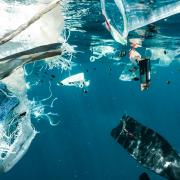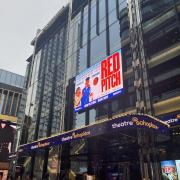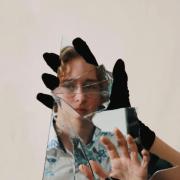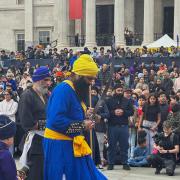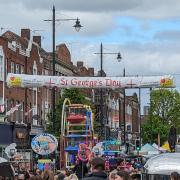
Diamond. One of the most advanced scientific facilities in the world. Whether it's an unknown virus structure or a fragment of ancient rock, this synchrotron (a machine that is capable of being ten thousand times more powerful than a traditional microscope) can be used to study many samples and lead the UK's scientific research to success, unravelling the unknown truths behind science.
On the 16th of March I visited Oxfordshire to see the UK's national synchrotron, Diamond. After talking to several people who worked for Diamond about some of the projects they had been working on, we had a talk about the Diamond Light Source; Claire Murray, a scientist involved in gas cell and catalyst research, gave us an insight into how it works and what it is used for. This was followed by a tour around the 'ring' in which we saw the parts of the synchrotron itself and various labs that consisted of items the scientists had been experimenting with.
The process begins with an electron gun which supplies and produces a stream of electrons. These electrons then pass through a linear accelerator which gives them more energy, essentially 'boosting' them to increase the speed at which they travel. This is then followed by a booster synchrotron which further accelerates the electrons to reach their final energy. Ultimately, the storage ring maintains the energy and 'traps' the electron beam as it produces light used for a wide range of projects and experiments; as the beam travels in a circular motion, there are beamlines (i.e. labs) that are positioned in such a way that the light can pass through each one to be used for the studies of different samples. There are a total of 33 beamlines, all involving different uses of this beam and a few examples are: nanoscience, x-rays, magnetism and many more.
On top of all this, there is a project called 'Designs for Life' which is a creative fusion of art and science where people have panels that depict, in textile art, some of the 'dangerously beautiful' diseases and viruses that could be investigated in the health-related scientific research at Diamond Light Source. The project is said to be aimed to promote a better understanding of how science at Diamond Light Source can help unlock the secrets of these diseases. Examples of pieces of art that have portrayed diseases/viruses include a DNA fingerprint, HIV virus, breast cancer, malaria, photosynthesis, flu virus, along with many others (as shown in one of the pictures above).
Sumith Salluri, who also went to this event, said 'The experience at Diamond was far beyond my expectations. The presentation was extremely informative and the tour opened our eyes to what scientists are doing on the forefront of science. There was a lot more to Diamond than what originally meets the eye.' Therefore, I strongly recommend this event to others, especially to those who are interested in science. There are also several other events for families, schools and universities, which you can find more about by visiting their website (www.diamond.ac.uk).








